 Joining me this episode to talk about her newly released book Fearless: How to Transform a Services Culture and Successfully Productize is Eisha Armstrong.
Joining me this episode to talk about her newly released book Fearless: How to Transform a Services Culture and Successfully Productize is Eisha Armstrong.
Eisha is also the Executive Chairman & Co-Founder of Vecteris which is a boutique management consulting business focused on helping IP-based organizations productize their core assets. Eisha is a business leader with expertise in product innovation and product portfolio management and has extensive experience in advising c-level executives and overseeing data analysis and qualitative research.
With her skills and experiences, and together with Jaime Drennan and Molly Tipps, Eisha wrote her latest book entitled Fearless: How to Transform a Services Culture and Successfully Productize. The book tackles frequent point of failure and dives deep on the change management required to build a Product-Friendly Culture. It also provides readers with actionable steps to building a fearless product mindset in the organization for sustainable, scalable growth.
If you want to know more about Eisha and her amazing works, you may click here to visit her website. And you may also visit their company website in this link.
I hope you enjoy my engaging interview with Eisha Armstrong. Happy listening!
You may also refer to the transcripts below for the full transciption (not edited) of the interview.
Greg Voisen
Well, welcome back to Inside Personal Growth. We have joining us and you say you're in Cincinnati, Ohio.
Eisha Armstrong
Yes, I am.
Greg Voisen
With a company called Vecteris and the author of a new book. And her name is Eisha Armstrong. And in front of you, you can see it's called Fearless: How to Transform a Service Culture and Successfully Productize. So go out and get a copy, we'll put a link to this book as well. We're also going to put a link to her website, which is a place where you can go and actually get more information, download a chapter, and there's a tool there. So you're gonna go to Vecteris, v-e-c- t-e r-i-s.com. Forward slash fearless home, and we'll put a link to that as well. So Eisha, thanks for being on. You're doing good.
Eisha Armstrong
I'm doing great. Greg, thank you so much for having me.
Greg Voisen
Well, we're it's a pleasure to have you. Now I want to let the listeners know a tad bit about you and the two co-authors. Jaime Drennan, Jaime Drennan, is that right? Drennan is one of the co-authors and Molly Tipps. But Eisha Armstrong is the Executive Chairman and co-founder of Vecteris, where she works with companies ranging from startups to Fortune 500 companies on product innovation, and product portfolio manager. She has 25 plus years of experiencing, you don't even look that old, developing, launching and managing New Data and Information Services prior to co-founding vectors. Eisha held senior product leadership positions, both with ew Scripps diversified media company and with c a b. Now Gartner, the world's largest membership based corporate performance research and advisory company, she has an MBA at the Harvard Business School and her Bachelor of Arts in both Women's Studies and Economics at the University of Kansas. She's also a certified yoga teacher, which is wonderful. And we're gonna do a downward dog position when we're done on this podcast and teach us a weekly power yoga class. Well, it's a pleasure having you in this book was really quite interesting. And you know, you're interesting in the respect that you've got such a diverse background, you know, you don't often get a yoga teacher that's trying to help people productize their business. Um, but in the preface of the book, I loved this story, actually, you speak about your trek up Mount Kilimanjaro, we probably don't find that many people that are tracked up can Mount Kilimanjaro as well. Other than I'm going to put a plug in, I just finished co writing a book called the precipice of life with Beau Parfit. He's climbed all the highest Seven Summits. And I've interviewed 28 men and women who have climbed the highest Seven Summits. And it was fascinating interviewing all these people, men and women who've done very dangerous things. And it just tells you when you're on the precipice of life, you're living life. So you utilize this story to discuss fearlessness, and I would say, hey, look, if you're gonna start climbing mountains, you got to be pretty fearless. Can you tell the story and the outcome was both you from summiting Mount Kilimanjaro, the lessons you learned, and obviously, there was a big one about David's inhaler.
Eisha Armstrong
Yeah, no happy to and I can't wait to read that book. I mean, wow, getting to interview people have
Greg Voisen
done that. I owe you a copy. I will definitely get you a copy.
Eisha Armstrong
Oh, thank you. Thank you. So yeah, last summer, my then 16 year old son David. And I got the chance to climb up Mount Kilimanjaro for something that we had been training for over a year. And really unique opportunity to get to do that with my teenage son. And I opened the book by talking about this instance that happened on the second day where we were over 11,000 feet up, and His breathing was starting to become very belabored and he has mild as asthmatic anyway. Right. So yes, and he said, Mom, I need my inhaler. And I realized that I had not put it in his day pack. But it was kilometers ahead of us in his overnight pack that was being carried, thankfully by porters but it was not with us. So our guide was very clear minded. And he radioed ahead and got them to bring back his overnight pack. And he got his inhaler in time. But that
Greg Voisen
was right. No, right. Yeah. But you know, the moral there, too, that you learned is like planning ahead, right? You know, one of the things I learned is perseverance, planning, persistence, whatever you want to call it, is necessary to climb Mount Kilimanjaro. And the same thing is required Eisha, when you take on product as Asian company, this thing kind of relates all the way through this? Is there anything more you want to tell us about that mount Killman thing? I mean, you guys made it to the top, there's a picture of the two of you there.
Eisha Armstrong
No, I mean, there were many opportunities to exercise what I call your fearlessness muscle. Whether it was you know, beforehand, getting very concerned about everything that could go wrong, or getting frustrated, you know, we climb up, you know, 15,000 feet, and then hiked down 2000 feet to spend the night that was kind of frustrating to have that maybe backwards progress and altitude. But at the end of the day, the things that helped us kind of push past that fear, I think are the same things that business leaders can use when they're trying to change their businesses, so they can, you know, break down the risk into manageable chunks, they can be grateful, they can focus on controlling what they can control, going slowly. Wonderful, wonderful lessons that you could draw a lot of parallels to.
Greg Voisen
Yeah, and make sure you have your checklist. Yeah. And your inhaler? Yeah. Well, I do know that, you know, when you climb with ice boots, whatever the things are the crampons, you know, there's various techniques used like sideways, right, actually, where you do one foot, one foot up one foot, one foot up, you know, but mostly average person doesn't really know that this is what required. And literally, it is kind of a one foot at a time kind of deal, especially when you get to very high elevations. And you get to a point where you potentially need oxygen now and Mount Kilimanjaro, you guys didn't need it. You weren't that, well, you were high, but if weren't that high, where you needed oxygen. You know, and in your chapter, good ideas are not enough, you speak about the elements associated with successful product possession, and the emotional side associated with overcoming fear. Speak with the listeners about this, these elements and also the emotional side. You know, because usually when fear comes in, we're resistant. Right? We freeze. Right? Now we don't want to do this. This isn't for us. So you know Eisha, get out of here? Because we liked it the way it was. Right?
Eisha Armstrong
Right. Totally. Yes. Well, I think it might help. First, just by defining when we talk about product possession, what do we mean? So we're typically talking about organizations that have made their money by selling services. And now they want to standardize those services or tech enable those. And that involves more than just how do we become more innovative and invest in new ideas, but it also involves digital transformation and business model change, all wrapped up into one strategy. And you know, this, this is a significant change, innovation, digital transformation, business model change, and you can do everything right. But if you don't address the underlying fear that people have, it's going to be very hard to make a change like that in your organization. And we believe that, you know, the most successful organizations are the ones that realize this is a very profound change. And they need to retool the entire organization in order to support productization.
Greg Voisen
Yeah, it is, you know, productization, like you said, taking something and either turning it into a software or an application or something, you know, versus someone selling a service. And I know many organizations are going through that right now. Because of the just not just the internet, but the internet, you know, lowers your barrier to entry. It's less expensive, you can reach more people. There's a lot of things that you can do. And you talk about this product possession pathways, which is a step by step process for successful product possession. Can you speak with the listeners about the five elements you have a chart or graph in the book? Maybe we can pop that up in between here when we do that, but what is that and what do you mean by that when you're talking about these five elements?
Eisha Armstrong
Yeah. So it's a step by step process, as you said, that we specifically tailored for services organizations to go through productization. And it starts with first aligning, developing a vision, and then also funding and resourcing that that vision, then it moves into defining the customer problem. So understanding what are our customers urgent and expensive problems, what are the market needs, what's the opportunity is, the third step is what we call co design and develop. And that's where we generate tests and develop the new products. And then we go into the fourth step, which is launching boldly, where you create your go to market strategy, your pricing, your packaging, and you launch that product. And then finally, it ends with managing, measuring the uses, improving on the product. And this is a very iterative process, these five steps, it's a circle of test and learn. And it draws on a lot of concepts that are used in technology, product development, like lean, agile design, thinking, and so on. Now, I will say great, we do believe that the primary differentiator of an organization's success and productizing is not the strength of their product innovation process. But it's the courage to adhere to the process. Yeah, and
Greg Voisen
that's an important thing for my listeners to get, you know, and by the way, there is a QR code in the back of the book. So people can go to this to get these resources that we're talking about. So you don't feel lost, you can just take your phone and click on that to get to that QR code. And that, that brings us to obviously, because you discuss many things in this book, but one of it is culture that drives productization. And, you know, cultural transformation is something that's been talked about for years and years and years, and how do we get it and we recognize that the on the balance sheet of any good company, their biggest asset, is usually their human capital. And that human capitals conversion into a company that will embrace product as Asian, I want you to speak about, if you would about the friendly culture that needs to be created for successful products as Asian, and what you refer to as the Four Horsemen and the anecdotes. There's actually a chart in the book. And I kind of love it, because it's a compare and contrast, kind of, you know, chart and I'm going to try and find the chart so I can hold it up here.
Eisha Armstrong
Okay. Oh, thank you. Yeah. So, you know, we, we've noticed in our work with hundreds of different services organizations, kind of the cultural attributes that tend to kill the product innovation strategy, and the cultural attributes that that can make a product physician strategy really stick and be successful. So the attributes that can kill a strategy, what we call, as you said, the four horsemen of product decision, are first knowing where we believe we have to be the expert, right? Second perfectionism. So, you know, my personal worthiness is defined by my performance, and everything needs to be perfect. The third is scarcity.
Greg Voisen
Folks, you can see this, but I will try and make it as close as possible. There they are. What I loved about it in the Compare and contrast was the knowing was discovering. So what you're trying to do is shift the mindset of the people to believe in being curious and open to changing their mind. Right says, hey, we know everything. And this is what we're going to stick with. You have to be very curious to go through this process. Totally for my listeners, that's on page 55 When you get the book. Thank you.
Eisha Armstrong
Yeah, we try to make it memorable. And again, you know, if you're in a place where people have really defined their professional value by being an expert through individual heroics by selling themselves and you're trying to get them to take a more product approach, you want to really articulate what are some of the new behaviors like discovery, moving faster collaboration, things like that. So that's what we tried to do.
Greg Voisen
Well, knowing is the first one what are the other four?
Eisha Armstrong
So no into the first horsemen. The other the other one is perfectionism. The third is a scarcity mindset. And this this really comes into play when there are fears of cannibalization will my lower priced product cannibalize my higher revenue services. And then the last one is individual heroics. Again, where we're so used to selling ourselves versus selling product. I, you get to that individual heroics in the culture. Well, and
Greg Voisen
those are the four but those are the horsemen. Now the anecdote on the first one was discovery from not knowing what are the other four anecdotes to the ones that you mentioned?
Eisha Armstrong
Yeah, so the antidote to perfectionism is speed, moving quickly, so we can quickly test and learn, and test our ideas, learn how the market will respond. The antidote to scarcity thinking is an abundance mindset. You know, products make the pie bigger, they don't shrink our slice. And then individual heroics, the antidote to that is collaboration.
Greg Voisen
Yeah. And those are, I want people to really realize that, like she said, the successful product nation comes from shifting and making a successful culture that will embrace this. And that little chart is really kind of key element because you're gonna have a lot of people that are going to be on the horsemen, and they need to move over and look at the anecdotes associated with it. You state that we can cultivate individual fearlessness. And you've come up with an acronym of skills that we can practice. And your acronym for this is called Leap, l e. A. P. What does that Ackermann and, and more importantly, look, you're a yoga instructor. Yoga is taught by constant practice of usually the same things, to actually move us into a state of higher consciousness in connection with a greater source where we reach our intuition, call it a make a god connection here, whatever you want to call it. But really what you're doing here inside businesses is you're the undercover yoga instructor trying to get people to connect. Maybe you're even an undercover evangelist. But the reality is you're trying to get people to wake up.
Eisha Armstrong
Correct? Yeah. Thanks for calling me out on that, Greg. Yeah. Yeah. So what we noticed in our work with companies who are doing this is that the leaders have to personally model fearlessness. And the more that we kind of dug into how are they doing that we found these four different behaviors that we've now turned into this acronym leap. And the L stands for listen to your intuition. And you do that by quieting your mind, you can do that through yoga, you could do that through meditation time in nature, there are a lot of different tactics to use. But ultimately, we found that the most fearless leaders were ones who had a practice of quieting their mind, not just to reduce stress, but to tap into that inner wisdom, tap into that gut instinct, that intuition, the source. And then trust it.
Greg Voisen
Yeah. And, and I think, you know, as much as culture is important, what you've just talked about in this leak out acronym is important as well, and so important. In Asia, you mentioned along the way to product obsession, we might need external help and assistance, you are the person that that provides that help. And you come up with what you call simple tactics that can make asking for help easier and more productive. And what we're talking about here, so that my listeners understand is like, we're saying, hey, what are the tactics to actually be courageous enough to ask for the help? And if you could discuss those tactics with the listeners today?
Eisha Armstrong
Sure, happy to Yeah, and again, these come from our own experience, as well as a lot of academic research that's been done, on how to best get people to help you and to get that courage to ask for help. The first one is to be prepared with requests. So spend some time thinking about a current project, making a list of resources that you I need for it and listing out kind of who what when can help and just kind of always knowing if someone says how can I help that you're prepared to answer? The second one is to be very precise or specific. When asking people what you need. So, you know, what I love is referrals. To you know, people who could help me find this a job like this. What I would love is if you could pick my child up after school, you know, while I'm getting my chemotherapy, you know, just very, very precise requests can help in that asking for help and make it easier for people to give you help, offering help when asked right, good karma. So when someone asks you for help, you know, offering that and making sure that you've got, you know, reciprocal relationships with people. And then finally, the last one is to create relationships that are deliberately designed to help. So these could be mentorships and actually saying, like, will you mentor me? Or advisory boards for our businesses? Or nonprofits? like will you be on my advisory board, those are great relationships, where we're, you're setting the expectation up front, that you're going to need help.
Greg Voisen
I think also to not to change your tactics, but you know, if you're a good person, and intuitively connecting the dots, you can be proactive that providing that as instance by making a suggestion or saying, hey, I think you ought to talk to John, or Mary or whatever. And the key there is the great the, the more you become aware of where somebody is, and you meet them where they are, and you understand that they maybe haven't directly asked you for help. But they'd inferred that they might need some help, or you have gleaned through the conversation that you can help them some way because you know, you can help them. I think oftentimes, that's the best way to help somebody.
Eisha Armstrong
Right? Yeah, that's such a wonderful point. I'm going to use that. Thank you.
Greg Voisen
Okay. Well, I'm just gonna give an example I was in. There aren't many of them left, but a Macy's department store the other day. And there was a lady who immigrated with her son from Ukraine. And she had pretty good English. And we got to talking and I was listening, listening, listening. And in Ukraine, she she's working in a department store making hardly any money. But she said, well, you know, I was an accountant for the government. And I did this major accounting and whatever for Ukrainian government. I put her in touch with a friend of mine who owns a CFO outsourcing company, and bookkeeping company. And she's interviewing this week. So there's See my point is, is that if you can help somebody out of a situation, because they haven't even asked for help, they didn't even she didn't say I needed your help. She was telling me about her. And then all of a sudden, I'm saying, well, here's a woman that's overqualified to be working at a department store. Can I help you maybe get a job where you could make enough money to support yourself? That's a good example. That's what I'm using.
Eisha Armstrong
So yeah, that's a good one. Yeah. So
Greg Voisen
You mentioned that having productization vision is important. I mean, you talked about all the vision, mission purpose, all the things that we've defined years, and then an effective product design, mission vision includes three things. Can you tell us those three things are? And what is the importance of focusing on what I'm going to call Simon Sinek the why. And also what Amy Edmondson talks about in her fearless organization book, I need to get her back on the show. Actually.
Eisha Armstrong
She's wonderful. Yeah, you
Greg Voisen
know what's interesting, I met her in Florida once through Larry Wilson, Wilson learning. And she and I have lost contact, and I want to get her back on the show. So if you know her, I'm gonna ask for your help. See if I can get her back on the show about the fearless organization.
Eisha Armstrong
Absolutely. Yeah. Yeah. Such a great book. We learned so much from her. Yeah, so I think a good product decision vision definitely includes the why. So why are we pursuing this based on the impact that it might have on our customers or even our employees, right, so we might be tech enabling or services or standardizing our services so our employees can have better work life balance, so we can reach a broader market, we make more change in the world. Like that's, that's the way that's really going to get people excited about it. But we also recommend that we include a little bit more detail, such as where we want to go. So what's our high level goal? Is it to improve employee retention, retention? Is it to impact you know, instead of 100 customers next year, 1000 customers, so putting out some type of high level goal and even specific targets is very useful. And then also, what we think we might do, so we might do this by maybe using more artificial intelligence AI in our analysis. We might do this by creating a self-serve piece of software that allows us to reach a more price sensitive market segment. Giving that detail I think is really helpful when you're talking about this type of magnitude of change. because it helps your employees envision how to do this and how to be supportive. So we definitely want to start with the why, but then include some more details.
Greg Voisen
Well, it's, you know, I'm going to tell everybody that the vision is so important for this product position, or it's just not going to occur. And that's what really has to happen, you got a really strong vision, and a really strong, like, focus. You know, that's what you basically said, and a culture that wants to do this and is engaged in it, it's going to be successful. And I want to use your example in the book, you know, in your chapter on organizational structure, you speak about one of your clients resource Pro, it's this global insurance focused business. And I happen to have a background in that business. So I understand, can you speak with us about how this company successfully productize themselves, and changes that were necessary in the organizational structure to actually make it happen, because, you know, many organizations structure isn't set up for successful product differentiation, especially when they've been a service organization. And now all of a sudden, you're taking, let's say, it's an insurance company that focuses on property and casualty, or they focus on life, health and disability, or medical or whatever it might be, it doesn't matter. But when they start using the internet to actually sell their services, versus a huge sales force that's been out there that's been doing at one on one, it's a huge shift, because the whole industry was always built around personal connection, one on one, not doing it through the internet. Tell us how that one went for you.
Eisha Armstrong
Yeah, so the first thing they did is they brought in some new talent, a chief technology officer, some people who had experience in software product management, and they started building some new software products. And at the same time, the rest of the organization was getting really excited. So they've done a great job of creating a vision and getting everyone in the organization excited about it. But then they started running in different directions and creating their new products in the different business units. And what they found was that there was duplication of effort. So the same type of product being developed in different places, and also conflicting priorities. And that was really making their efforts inefficient. In some cases, it was slowing things down. So we came in, and we did a quick audit, to try to understand where was productization happening out in the rest of the business, who thought, you know, who was responsible for different things, who was responsible for new product ideas, who was responsible for developing them who was responsible for Product Marketing. And we found out that there's no clear articulation of the roles and responsibilities. So we help them clarify that based on their strategic objectives, and that really sped up the pace for them to now develop new products and introduce those so
Greg Voisen
They didn't get bogged down, because you know, when there's duplication going on, communication has not occurred effectively, to mitigate that kind of thing to occur. And it's people like you that do that and recognize it and say, hey, look, we need to modify this structure, such that there's this one department that's going to productize, XYZ, ABC, whatever it might be. And it's really an important service that you offer. And I want to let my listeners know that so go to Vecteris.com. To learn more, because that's where you're going to find out how they work as a team. So this is Eisha and her partners and the rest of the group, I think you said there's about is or 10 or 15 of you or something.
Eisha Armstrong
Yeah, we have a dozen employees now. So please.
Greg Voisen
So they certainly can help you out? Well, boutique in one sense. I mean, a lot of big companies like working with boutique organizations, because they know it's going to be less expensive. So you know, and that's the benefit because you're stealth. Speak with us about creating a consistent governance process and the development of a council to oversee the governance. Many companies no matter what size they are, I've gone into big companies that don't even have a governance process. And I've gotten into definitely small companies that when you say governance, they go what is it? So maybe ought to define it first, and then tell them why a council and the overseer governance is important for successful product possession.
Eisha Armstrong
Yeah, so at its simplest governance is how Do we make decisions about what new products are we going to develop? Where are we going to invest? And where might we sunset products? So it's a method for making decisions about investment of resources. And certainly at an organization like resource Pro, a good governance process can help make sure that you don't have conflicting priorities, and that things that are have a high market opportunity or are being invested in. And one of the best ways, as you mentioned, is to set up a council that meets on a regular basis where you have people from around the organization who look at what's currently in the product roadmap, what's in the pipeline have to be developed and make decisions about where investments will be made. The other thing that I really like about governance councils, product councils, whatever you want to call them, is it's a way to build that product friendly culture. Because you involve people, you adhere to a rigorous process for making decisions, you share a failure rather than scapegoating any single individual or team. And so it's almost like a stealth way of creating that new culture kind of designed as a here's how we're going to make decisions going forward.
Greg Voisen
important, because this is a big investment that companies make in both human resources could be in other things as well. But primarily, you're looking at the knowledge of these knowledge workers coming together to create this. And also then designing something that's most likely going to end up as a tool out on the net, or it's going to be something that we're going to productize that way. Eisha, can you speak to lizards about these three models for change? Usually, you know, the MIT studies show that most people are immune to change, they don't really like it. It goes all the way from the studies that were done on people that would go in and they, the doctor would say, well, now you have to follow this new diet, and you've got to do this. And by the way, you know, you had a heart attack, don't smoke and don't do this. And in three months, the Immunity to Change would work. And they wouldn't take any of the models, any of the suggestions, they were back, eating the same wrong foods, and not exercising and smoking a cigarette again. And that's MIT study, right? So why is this there such this resistance and what are these models for change, that just might work in the product position, successful product as?
Eisha Armstrong
Well, again, it all gets back to fear. People fear change, we fear the unknown. We fear risk. And so that's what makes us tricky. And again, in our experience, we've seen three different ways to kind of help organizations work through the fear. So the first one is you bring in people from the outside who are already good at this, you can either hire them, you can acquire a technology enabled business. And that really helps make change fast. The con of that is you may face some organ rejection. Because you're moving so fast. And the rest of the organization may have a little bit of a backlash to that, that that kind of hiring or acquiring pacesetters is a great way to quickly move through that fear because you're getting people who already think have this product mindset. The second way to change is to incubate as a separate organization. So you kind of wall off your product zation efforts, there, you're not relying on the rest of the organization to change. And that way you keep it kind of isolated. This can translate into faster time to market. But it can also make it harder to sell those products alongside your existing services, you're going to be less integrated into the core business. So if that's part of your distribution strategy, that's going to be difficult
Greg Voisen
to the adoption by the actual people that have been walled off. Well, it's so is that a fair question? I mean, like you, you literally have a part of the organization that walled itself to go do this product possession and you have the other part of the organization's still working on what it worked on before and then all of a sudden, they say, hey, we've got this great thing, but then the other people feel left out. Totally. Oh, yeah. So then what happens there? Don't you get this kind of rejection?
Eisha Armstrong
You could, but this works best when the product that you are developing really should be its own business. Okay. So it should be spun off because you're not going to be relying on your existing distribution channel to sell it or
Greg Voisen
so the isolation decision models should really only be used in that case. And what's the third model?
Eisha Armstrong
It's what we call creative movement. And this is where you're inviting everyone into the change. You're tapping into emotion. You're teaching them the LEAP method. Everyone's doing meditation and yoga and overcoming their fear. You've got new org structures. This is less risky, but it takes longer. So if you're trying to do productization, quickly, it's going to be hard to do that. If you're creating a movement, if you want long lasting change. This is the method to use
Greg Voisen
sounds like it? Yeah, it really does. It sounds like that's where you've got the most inclusion, it's probably the biggest investment is probably the longest lifecycle for productization. And so you got to pick your model. You know, which one? Which road, do you want to go down? Are there hybrids of any of those? Yeah, yeah,
Eisha Armstrong
there are hybrids are hybrid
Greg Voisen
it out and maybe take a little bit of the Islamisation a little bit of the other one, blended all together and make something work where everybody's happy if we're having fun. Yeah. You know, Eisha, helping a company productize. Their business is obviously a big task. We've talked about all kinds of things associated. One of the biggest one is acceptance, and a culture that embraces it. And you've said, you know, that's where the rubber hits the road. And not everybody usually in an organization is aligned. What are three takeaways that you believe our listeners would be thinking about to productize need to know about to adopt to be successful? In the process? What three things do you want to leave our listeners with?
Eisha Armstrong
Yeah, so the first one is recognize that this has a significant emotional component. And that's fear, and be comfortable talking about the fear, we're afraid of losing money, we're afraid of looking bad, we're afraid of becoming obsolete. Because the more that we do that, as leaders, the more that we're giving other people permission to talk about that fear. So that's the first one. And then the second one I touched on earlier. As leaders, we need to personally model fearlessness behaviors, using things like meditation, quieting the mind, and gratitude practice and abundance mindset, all of that can help become less fearful. And then the last one is that it's not just about our own behavior, but we will likely need to change our org structures, bring in new skills, change our incentives, create governance, councils, things like that to support the change of behavior.
Greg Voisen
Well, what a perfect person who teaches yoga to actually teach productization strategies. For two reasons, in my humble opinion, one is because your dedication to a practice is very similar to the dedication to product possession to actually make this work, right? And for the outcome to be greater than the sum of the parts. So I don't think it could be better positioned than for what you're actually doing on both sides. Want to hear part time yoga instructor and full time productization expert, I appreciate you having me on inside personal growth. And for my listeners, we've been talking with Eisha Armstrong about her book called fearless, how to transform a service culture and successfully productize. And for more information about that, go to Vecteris V AC, T e, r i s.com. And if you want to get more on the book, forward, slash fearless Home is a place you can go for the homepage on that. Also, once you get the book, you can go to the back. And there's all kinds of references in this book. And I want to thank you for that. Because they're all spelled out. Sometimes people get that. And there's a little page I think's really important. It says, Get started now. Right? And that gets started now, I probably should have been at the front of the book, but it's actually on page 229. And I would recommend you because there's a couple of QR codes. Go take a look at that page too. And look at some of the graphs and charts in the book. There's another one on the second page there as well. So thank you, thank you, Eisha for being on Inside Personal Growth. Namaste to you and thanks to all of the listeners out there who've hung in there. And if you're thinking about product possession, go to Asia.
Eisha Armstrong
I will. thank you, Greg. It's such an honor to be on.
Sign up to receive email updates
Enter your name and email address below and I'll send you periodic updates about the podcast.
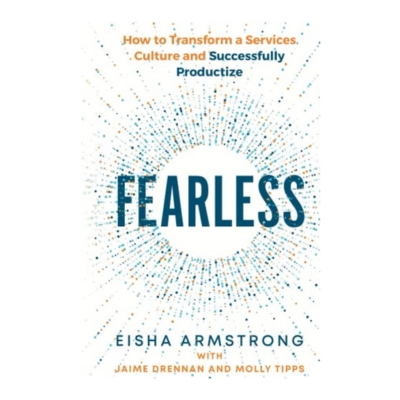
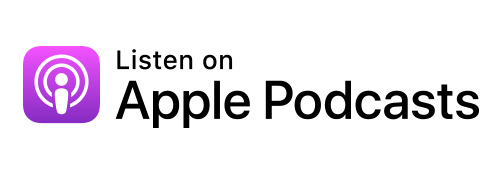

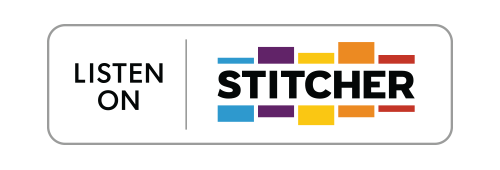


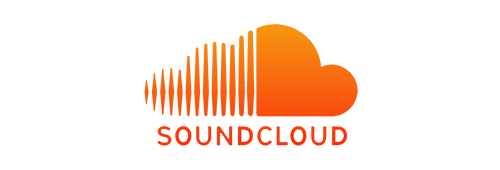

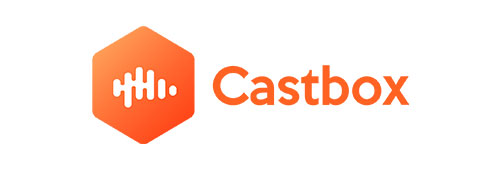
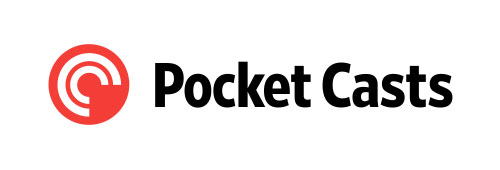
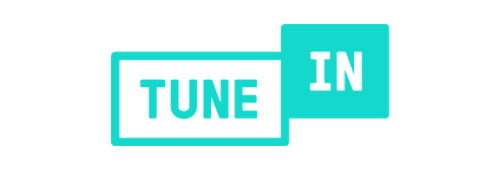
Leave a Reply